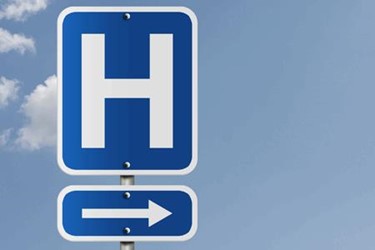How Hospitals Benefit From Medical Device Advancements
By Kayla Matthews, Productivity Bytes

Today, some of the most significant advancements are in medical devices. Researchers apply technology from outside of medicine to make methods more accurate. At the same time, hospitals and medical professionals are taking advantage of new developments — such as 5G — to use medical devices in new ways. Here are five ways hospitals benefit from advancements in medical device technology.
1. Early Diagnosis
New medical devices make it possible to detect severe conditions earlier than before. Early detection means doctors can prescribe patients the treatments they need — before symptoms become debilitating or harder to cure.
Some of these advances, like genomic testing devices, draw on advances in genetics. Doctors can use genetic markers in a patient's DNA to predict whether a person is likely to suffer from certain chronic and genetic conditions.
Other advances build on standard hospital fixtures. You can find medical imaging devices — such as MRIs — in most hospitals. These devices help doctors detect abnormalities in a patient's body before they begin to present symptoms.
Recent advances in MRI technology make images and scans more detailed, giving doctors better insights into the cause of a patient's problem. Developments in artificial intelligence may soon make these devices more accurate. When you apply the pattern-finding power of AI to MRIs, it results in clearer and easier-to-read images.
2. Improved Patient Monitoring
Patient monitoring devices are essential hospital equipment. They provide nurses and doctors with the information needed to make the best possible decisions, especially in an emergency. However, the high number of patients doctors and nurses take care of means total, round-the-clock monitoring isn't possible.
Smart patient monitoring systems use a network of sensors and 5G — or Wi-Fi — to provide nurses and doctors with real-time updates on key information, such as blood pressure, heart rate and more. This data can be accessed anywhere, reducing the amount of legwork needed throughout the day.
In the future, consumer or take-home versions of these devices may allow for better home monitoring of symptoms and patient diagnostics, reducing the need for follow-up visits.
3. Accessible Doctor Visits
With telemedicine, doctors use telecommunications and medical devices to offer advice and diagnose patients who can't see a professional in person.
Telemedical devices assist doctors in reaching and treating patients. The technology also can be used to help remote patients receive necessary follow-up care, especially when a treatment center is far away. It's also applicable in poor communities where long-distance travel is cost-prohibitive — or made impossible by weather or damaged infrastructure.
This innovation has already allowed patients to follow-up remotely, saving them lengthy or costly travel. Plus, it's been effective at keeping patients in touch with doctors. In one case, having the ability to see follow-up remotely reduced no-show rates by 50 percent.
4. Remote Surgery
Telesurgery is the surgical counterpart to telemedicine. Surgeons conduct medical operations using telecommunications technology and surgical robots, allowing patients to receive specialist treatment without needing to travel.
While the technology has been around since the early 2000s, slow wireless speeds curtail development. 4G was a major improvement in technology but didn't deliver speeds fast enough for telesurgery. The delay between human action and robot result was enough to worry surgeons.
One of the most common reasons medical devices don't get adopted is due to risks for potential complications. With telesurgery, the lag between action and result — the possibility a surgeon won't be able to react quickly enough — is enough to put wide-spread adoption on hold.
Now, new advances in surgical robotics and wireless technology — such as 5G, which delivers speeds up to 100 times faster than 4G — have made telesurgery more realistic. In just the past year, surgeons have conducted remote operations in China, Spain and India. In some operations, the patient and surgeon were more than 1800 miles apart.
Telesurgery isn't standard procedure yet but expect the technology to become more common as companies roll out 5G.
5. Difficult Disease Treatment
Advancements in medical technology are lifesavers — literally when talking about pacemakers. Doctors treat hearts that beat out of rhythm with a small device that uses electrical currents to keep it in sync.
New pacemakers are smaller, easier to implement and longer lasting. The result is better health outcomes for patients and lower risk of complications with surgical insertion.
Other medical devices include digital PCR platforms, which measure the amount of DNA or RNA present in a sample. Possible applications of the tech include screening for rare genetic mutations and testing for mutated DNA in a patient's bloodstream — a possible sign of cancer. The technology can help doctors easily identify rare diseases.
Medical Device Advancements Help Hospitals
The latest medical device advances will improve healthcare outcomes and make treatment more affordable and convenient.
Researchers are applying new developments in AI to old technology to improve their accuracy. Improved wireless communication will allow doctors and nurses to get real-time updates on patients. Soon, that same technology will enable surgeons to operate on distant patients without the need to travel.
About The Author
Kayla Matthews is a MedTech writer whose work has appeared on HIT Consultant, Medical Economics and HITECH Answers, among other industry publications. To read more from Kayla, please connect with her on LinkedIn, or visit her personal tech blog at https://productivitybytes.com.
